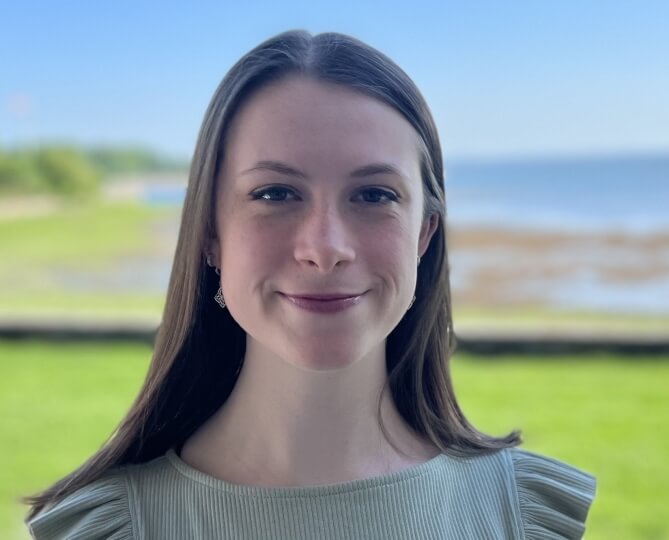News
For her senior capstone project, Genna McQuillan used fluid dynamics to simulate methane plumes
Engineering Design Projects (ES 100), the capstone course at the Harvard John A. Paulson School of Engineering and Applied Sciences (SEAS), challenges seniors to engineer a creative solution to a real-world problem.
Simulating a MethaneAIR Controlled Release Trial Using Computational Fluid Dynamics
Genna McQuillan, S.B. ‘25, Environmental Science and Engineering
Advisor: Steve Wofsy
• Please give a brief summary of your project.
The identification and quantification of methane emission sources through remote sensing is a necessary technological innovation towards the mitigation of greenhouse gas emissions. MethaneSAT is a methane-tracking satellite that targets point source and diffuse emissions plumes in the oil and gas industry. MethaneAIR, MethaneSAT’s aircraft precursor, acted as a proof-of-concept, but due to systematic errors in the imaging spectrometer, the total methane mass in a plume is hypothesized to be underestimated. In this paper, a methodology is developed for the simulation of a controlled release plume such that it may be tested and compared with a MethaneAIR image of that plume. Computational fluid dynamics simulators can model plumes previously captured by these imaging spectrometers to further the applicability of controlled release data.
• How did you come up with this idea for your final project?
My thesis was a natural extension of the work that I completed with Dr. Steve Wofsy's lab for MethaneSAT during my junior year as an undergraduate researcher. We decided to explore the potential application of computational fluid dynamics softwares to the analysis of MethaneSAT's data when the graduate student that I had been working with, Ju Chulakadabba, moved to the Technical University of Munich to work with Dr. Jia Chen. Dr. Chen has simulated multiple greenhouse gas releases from point sources and was happy to share her methodology with me.
• What real-world challenge does this project address?
This validation framework is broadly applicable to methane-tracking satellites. Ultimately, this workflow can support organizations like the Environmental Defense Fund and Environmental Protection Agency by equipping them with the necessary data to quantitatively evaluate, contextualize, and defend their satellite-based estimated emission rates for the effective mitigation of greenhouse gas emissions.
• What was the timeline of your project?
I learned the OpenFoam computational fluid dynamics software in August and September, then developed my steady state simulation. In December and January, I developed my transient simulation and tried to generate a finer mesh without success. Over the last two months, I conducted sensitivity analyses and spatial statistical analysis between the simulations and MethaneAIR images, and prepared my final slides and write-up.
• What part of the project proved the most challenging?
Learning OpenFoam was more challenging than anticipated. Its command-line interface and C++ programming language structure were inaccessible until I spent sufficient time on practice cases. Over the first few months, I found graduate students outside of the Wofsy Lab who worked with OpenFoam and were happy to answer my questions.
• What part of the project did you enjoy the most?
Once I became comfortable with OpenFoam, I became intrigued by its wide-ranging functionality and applications. As I conducted the spatial statistical analysis, I enjoyed comparing my simulations to the MethaneAIR data, as I gained new insights into the inner-workings of OpenFoam and the MethaneAIR plumes.
• What did you learn, or skills did you gain, through this project?
I am excited to apply OpenFoam to my future projects and am very grateful for the opportunity to devote so much time to what felt at many times like a passion project. Alongside OpenFoam, I became familiar with programs such as Open Street Maps, Blender, ParaView, R, and Linux-based computing clusters, while deepening my understanding of fluid mechanics, atmospheric chemistry, and statistics.
Topics: Academics, Environment, Environmental Science & Engineering
Cutting-edge science delivered direct to your inbox.
Join the Harvard SEAS mailing list.
Press Contact
Matt Goisman | mgoisman@g.harvard.edu



